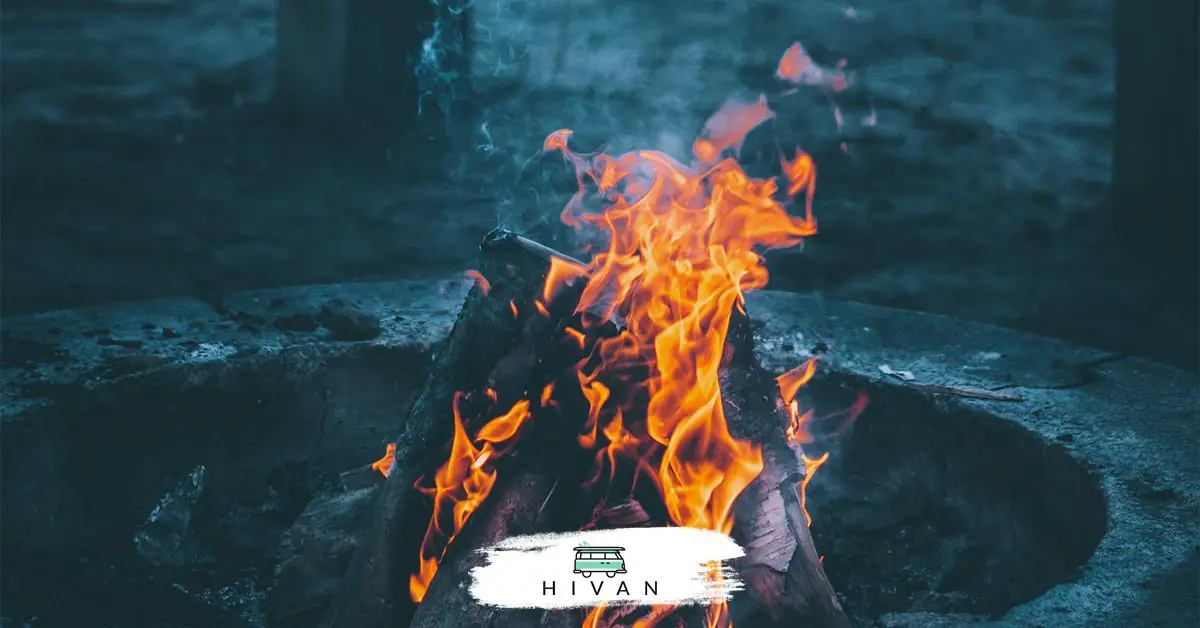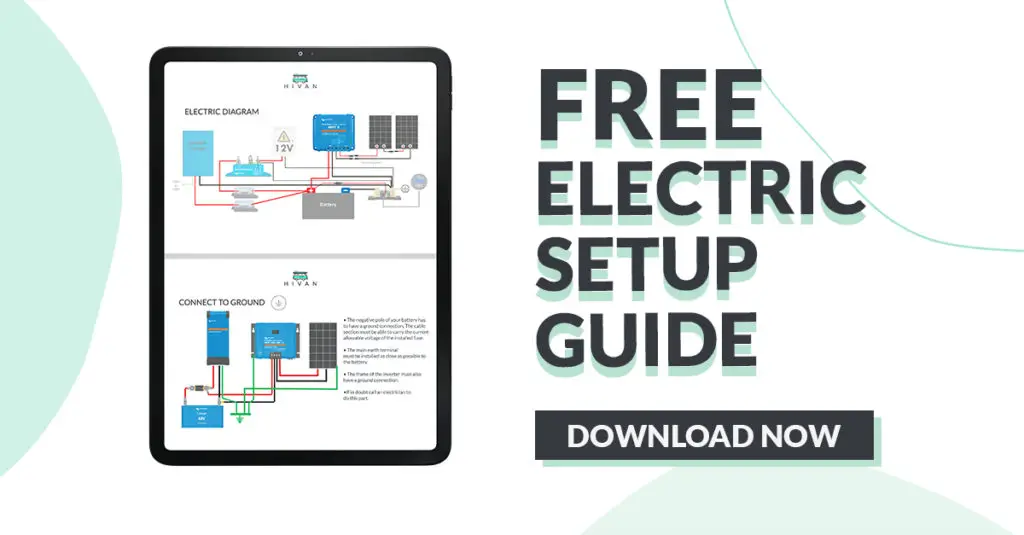Hi-van is supported by its audience. When you purchase using our links, we may earn an affiliate commission (no added cost to you). Learn more
Campfire smoke can cause eye irritation, discomfort, coughing, and constant frustration. Nobody likes sitting in front of the smoke, but the campfire is supposed to be relaxing. The smoke pulls toward you because your body creates a vertical area of low air pressure, sucking it in like a vacuum.

To stop campfire smoke from blowing in your face, follow these steps:
- Choose seasoned firewood
- Don’t sit in front of the wind
- Make a fire with a pit or windbreak
- Place a teepee over the fire
- Use a fan to blow the smoke away
- Make the campfire before the sun goes down
- Only burn firewood
Throughout this article, we’ll show you the proven eight-step process to stop campfire smoke from being an issue. We’ll also explain why it’s a problem, what the experts say, and how you can prevent too much smoke from coming out of the fire.
Switch to Well Seasoned Firewood
Contrary to popular belief, not all firewood burns the same. The burn rate and amount of smoke depend on the type of wood, its heat ceiling, treatments or coatings, and how seasoned it is. Unseasoned firewood hasn’t dried enough after it was cut, which simply means there’s too much moisture in the log.
On the other hand, seasoned firewood is perfectly dry and ready to burn. According to Backyard Toast, unseasoned wood is much more likely to cause a lot of smoke. You’ll end up with a fire that blows smoke in every direction, especially wherever the wind goes.
Another option is to choose heat-treated wood since it doesn’t produce as much smoke.
Sit in the Opposite Direction of the Wind
Perhaps one of the most common solutions is to sit away from the wind. Check your weather app or a local weather station to know which direction the wind is blowing before you go out on a camping trip. While the breeze can switch directions, the majority of the wind will remain consistent and predictable.
Lighting a fire on a windy day can make it harder to light. If you’re having trouble lighting a fire and there’s a lot of wind, some of the suggestions on this page will serve a double purpose. For example, seasoned firewood lights easier, but it also produces less smoke. Another example is that building a windbreak will reduce smokiness while helping the fire catch quicker.
Build a Campfire With a Wind Break
As you read above, windbreaks are effective, efficient tools for campfires. Before you make a windbreak, make sure it’s not made of flammable, flimsy materials. If you want to use a tarp or tent canopy, tie it snugly to the ground or nearby trees. You can keep the windbreak several feet away from the fire (sometimes well over 10 feet works).
The goal of a windbreak is to stop the breeze from blowing the campfire. If the wind can’t hit the fire, there’s a much smaller chance that the smoke will become an issue. You can sit near the fire as long as you want without getting smoke in your eyes.
Sit Near the Campfire, But Don’t Stand!
Fire works with pressure systems. It’s attracted to vertical, low-pressure areas, which is why it creates a vacuum when someone moves. Outdoor Luxuriez points out that a campfire’s smoke can quickly suction or push toward a person when they stand up. However, it’s not nearly as noticeable when the person stays sitting still.
Consider Building a Teepee Around the Fire
The Adventurous Camper dives into the history of how Native Americans used teepees to control the smoke coming out of their fires. Rather than trapping the smoke inside of the structure, a teepee funnels it through the top. The result is a warm, insulated teepee without the smoke that usually comes with campfires.
If you don’t have the supplies to make a teepee (or you haven’t purchased one yet), you can make a teepee out of the firewood. While it won’t be quite as useful, the shape will force the smoke upwards. A flat campfire sends smoke in all directions, but a teepee campfire sends it straight up.
Keep a Lightweight Battery-Powered Fan Nearby
Battery-powered fans should be near the top of many campers’ shopping lists, but so many people forget to include these handy tools. You can use a fan to blow the smoke in another direction, stay cool on a warm day, and more.
Powered by a 10400mAh large-capacity battery, it can be used wirelessly without wiring restrictions. After fully charged, it can work continuously for 8-36 hours according to the air volume speed. You can enjoy the refreshing cool breeze all day long.
The Dr. Chop Portable Fan comes with a rechargeable battery to let you bring it with you wherever you go. The battery lasts up to 36 hours of continuous use, and you can control the fan’s speed with a knob on the front of it.
If you don’t want to pack a fan with you, we recommend using a handheld manual fan. Newspapers, folders, and many other items with suffice. Simply fan the smoke away from you until it goes in another direction.
Make the Campfire Before It Gets Cold Outside
Campfires usually go toward the hottest spaces. If it’s cold outside when you light the fire, your body heat will be the first thing the smoke is attracted to. The second you light the campfire, the smoke will get in your face and become a nuisance to deal with.
Instead, light the campfire before the sun sets. If it’s cold throughout the day, consider lighting the fire when the sun is at its highest and keep it roaring until you go to sleep.
Don’t Burn the Debris
It’s understandable that most campers would want to toss their trash in the campfire. After all, it burns quickly and disposes of the litter without leaving trash everywhere around the campsite.
That being said, plastic, aluminum, unseasoned wood, styrofoam, and many other materials cause excessive amounts of smoke. Not only that, but a lot of these materials can send harmful toxins into the air, leading to lung irritation and problems for the local environment.
The best, safest way to light a campfire with minimal smoke is to get locally-sourced, heat-treated, well-seasoned firewood.
Find this content useful 🙂 ?
Subscribe to our Newsletter and get a free Solar Electric Diagram + shopping list.


